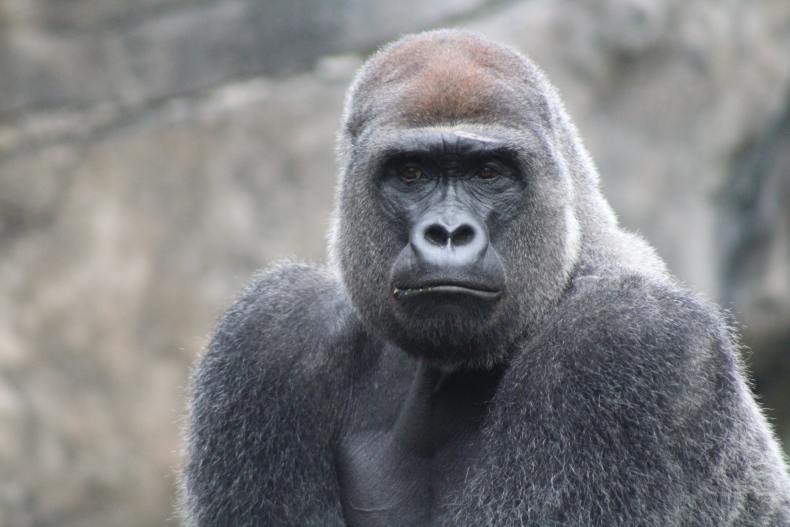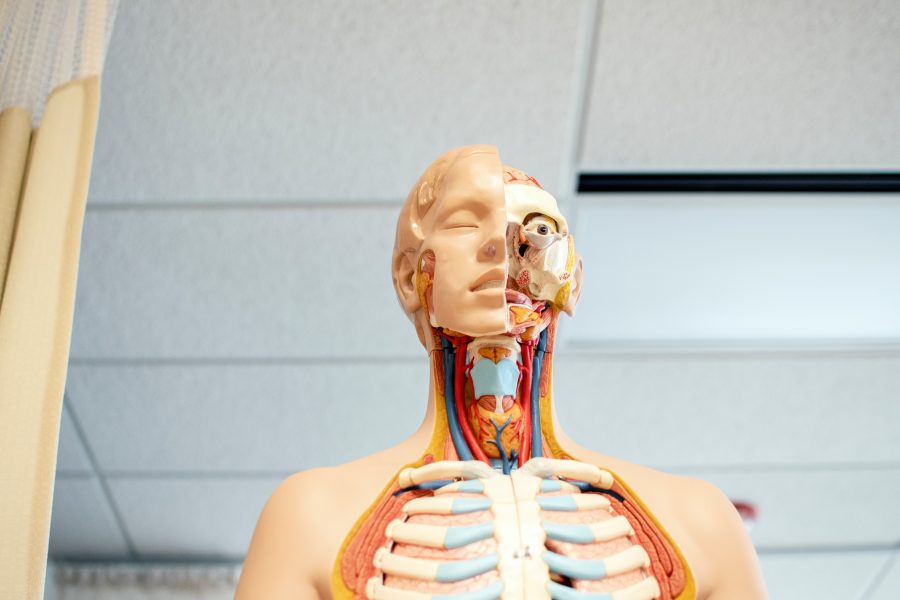There’s a plethora of different medical myths out there, and Niamh Ellen is here to explain her top five.
Eating carrots enables you to see in the dark
How many times did you sit at the dinner table when you were younger and were told “eat your greens”, followed by “eat your carrots”, because those orange veggies would give you some superhero style night-vision.
Unfortunately for all the carrot lovers out there, this isn’t strictly true. Although eating carrots won’t allow you to see through a pitch-black room, it does help to maintain healthy eyesight in low light. This is because carrots supply the body with vitamin A.
Here’s the science behind it: After consuming a carrot, the pigment it contains called beta carotene needs to be processed by the intestine, and then converted to Vitamin A (also known as retinol) before it’s used in the eye.
Retinol, through a series of reactions, is transformed into the visual pigment rhodopsin found in the eye’s specialist rod cells. These cells operate in low light conditions.
Rhodopsin is very light-sensitive and helps sense those tiny flickers of light in the dark, this light is converted into a signal which travels to the brain, helping create an image in our heads. As well as this, Vitamin A also helps protect the surface of our eyes.
Deficiency in vitamin A can lead to ‘night blindness’ and eye diseases such as xerophthalmia. But for those who aren’t vitamin A deficient and would rather avoid having them on their plate, ditching the carrots altogether won’t drastically affect the quality of your vision. That is, as long as you’re getting vitamin A from other sources like milk, eggs or spinach and maintaining a healthy diet.

If the body receives too much beta carotene, the excess is prevented from being converted to vitamin A, on account of our bodies having a nifty regulation system in place. In fact, whilst chomping on too many carrots isn’t actually too toxic for the body, it might give your skin an orangey tinge (beta carotene molecules give orange vegetables their colour) – so it’s best to avoid!
Fun fact: This myth was started as part of the war propaganda of WW2 during the ‘Dig for Victory’ campaign.
Humans share 50% of their DNA with bananas
Sorry to break it to you, but those of you reading this aren’t half banana.
This statement could have been misinterpreted from several sources, one including an educational video “The Animated Genome”, which demonstrated the research of Dr Lawrence Brody, director of Genomics and Society. The percentage, which is actually closer to 41 per cent, is based on the similarity of gene products, not of DNA. So, what does this matter?
Genes are regions of your DNA that instruct our cells on how to make protein products, which are the building blocks of our bodies. In fact only around 1-2 per cent of our DNA is made up of these protein-coding genes, the content of the remaining 98-99 per cent is largely unknown. DNA is found in the cells of animals, plants, bacteria, virtually everything living (minus a few viruses).
As all life on earth is related, by cleverly comparing our DNA sequences using technology, we can work out statistically how closely we are related to something. Some areas of our DNA have remained unchanged for millions of years, termed ‘conserved regions’ and some have changed drastically.
In an experiment headed by Dr Brody, a team of scientists took a typical banana genome (all of the banana’s DNA which includes all of its genes) and analysed the DNA sequences within it. This would allow them to predict which proteins would be coded for by the banana’s genes and the experiment was repeated with the human genome.
Then, one at a time the banana genes were compared to human genes. From this, 60 per cent of the human genes were recognised in the banana genome when measuring the degree of similarity, but of these 60% of genes, only about 40% of the actual protein products they produced were identical.

But if you think about it, like humans, banana plants need to consume oxygen during respiration in order to release energy. This requires proteins, and is where we draw part of that percentage similarity from.
We actually share 50 per cent of DNA with our parents, not bananas. To make you, half of your father’s DNA combined with half of your mother’s; which makes a complete set of DNA.
Humans have only 5 senses
The five senses (to see, hear, smell, touch, taste) – a solid foundation for many a descriptive writing piece. But if you already found it hard in your English lessons to cram all of these in, scientists believe we have many more, albeit lesser known. Although exact numbers have been disputed, there are some interesting senses that have been described that I’ll point out below:
Nociception: This is the ability to sense pain. It’s a critical sense, without the ability to feel pain we would severely injure ourselves. Pain protects us- if you hold a burning hot plate your pain receptors are activated, and your first reactions are to either drop the plate or quickly put it down somewhere. If our pain receptors didn’t work, our skin would be scolded, and we would carry on holding the plate as if nothing had happened (until you realised the growing red patch on your hand). A woman named Jo Cameron has a medical condition where she is unable to feel pain and often experiences agonising situations like the one described. She is one of just two people in the world with the condition; little is known about its mechanism apart from the fact it’s caused by rare genetic mutation.

Proprioception: This sense is pretty cool; it allows us to know where each body part is when our eyes are closed or averted. Take the typical examples of closing your eyes and touching your nose, typing on a keyboard without having to look down or throwing a ball without watching your arm as you do so. Life would be pretty tough without proprioception!
Chronoception: Sometimes it feels as if a year has flown by, and other times it’s like the month of January has dragged on way longer than it should have. Time can be considered subjective. Yet, one of our believed senses is chronoception; the ability to sense time passing. Our bodies have a proposed ‘natural body clock’. If you think about circadian rhythms (our daily sleep-wake cycle), this is highly impacted by the presence of light. Hence why, if you’re not up all night studying for an exam, most people will sleep during darkened night hours and wake as the sun starts to come up and shed light. Other areas of time perception include brief periods of time such as minutes, or the seasonal changes.
Humans evolved from apes
We didn’t evolve from the apes we know today. Or monkeys for that matter. Following the theory of evolution, modern humans and modern apes are actually the product of a ‘branch off’ from a common ancestor in the evolutionary tree. One branch produced the primates (chimps and gorillas and orangutans), and one produced ‘hominids’, our early human-like ancestors. As time progressed more branches of species resulted, but many died out as a result of Darwin’s idea of ‘Survival of the Fittest’, until we reached modern day humans, and a myriad of different monkeys.
Experts describe evolution as non-linear process. One species doesn’t simply evolve into another, one species could branch off and produce multiple different ones. Evolution is complex, and we still don’t know all the answers.

Gorillas are amongst the primates produced based on the Evolutionary Theory. (Image credit: Unsplash)
Scientists are unsure as to when this mysterious common ancestor in question is believed to have walked the earth. The last common ancestor between humans and chimpanzees could have lived on African soil a whopping 6-7 million years ago, whilst some ape-like fossils have also been found in Asia and Europe. If you’re wondering what this ‘missing link’ looked like, scientists aren’t too sure. More collecting of fossil records and DNA analysis needs to be conducted to piece the puzzle together.
Humans only use 10 per cent of their brain
If you’ve ever watched the film Lucy (2014) and were enthralled by the storyline, you might not have realised that this film is based around incorrect science. Without revealing too much of the plot, student Lucy finds herself abducted by a Taiwanese gang and is forced to smuggle their drugs. The drugs are stored inside her abdomen but when their contents leak, Lucy is given the ability to unlock ‘100 per cent’ of her brain giving her superhuman powers beyond imagination.
This is a myth due to several reasons; if we’re talking in terms of brain regions, although maybe not all at once, we use many different parts of our brain during the day to perform different functions. This includes the involuntary things we don’t even think about doing like breathing and the things we need to concentrate for like writing an essay. Way more brain region use than this ‘10 per cent’ figure. This can even be visualised using technology such as PET scanners. A PET scan provides real time snapshots of brain activity using radioactive tracers that are absorbed into the blood.

The brain is a complex organ, we use far more than ‘10%’ of it. (Image credit: Unsplash)
The tracers piggyback onto glucose molecules, as it’s the main brain fuel source. Glucose will be taken up in brain regions that need to be active to carry out a function. When different tasks are performed, different areas of the brain ‘light up’ on the images.
Even if this myth was referring to number of brain cells for example, it still couldn’t be true. Brain tissue is precious commodity, otherwise we wouldn’t donate 20 per cent of our body’s oxygen just to this one organ, to keep it running. Our brain cells – such as neurons and astrocytes – serve specific purposes in the brain, they don’t just wait around. If these cells for whatever reason fail to do their job, they will mostly die out anyway.
By Niamh Ellen
Featured photo credit: Unsplash

